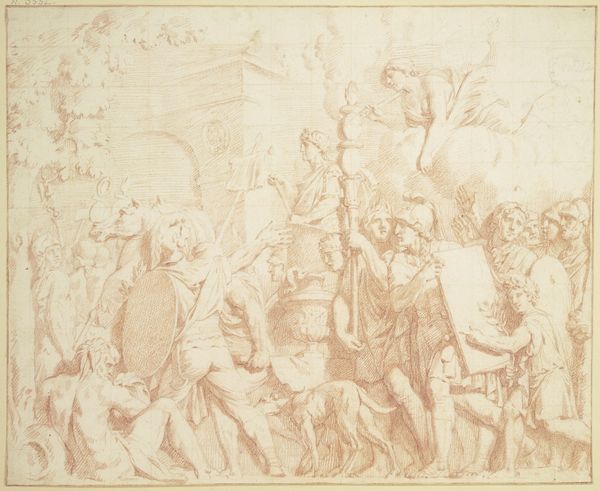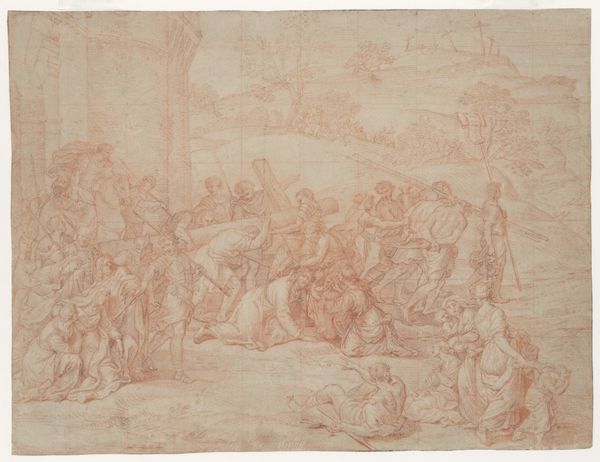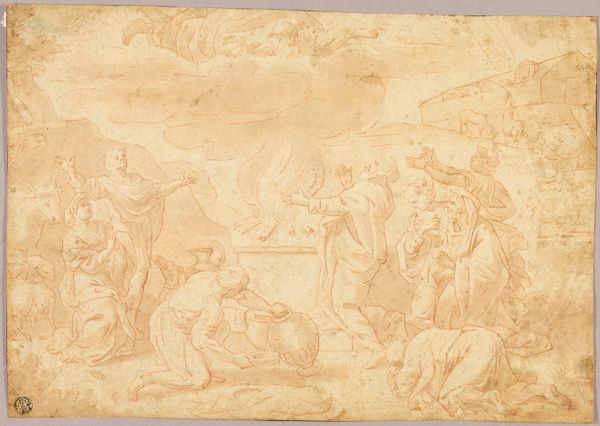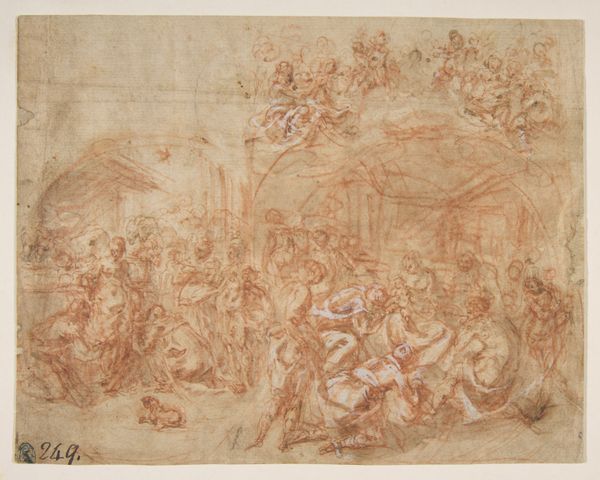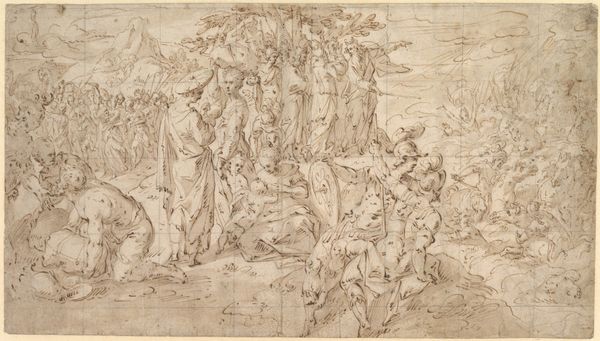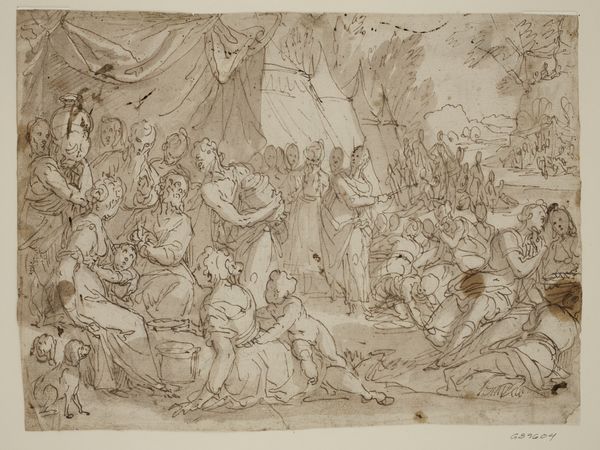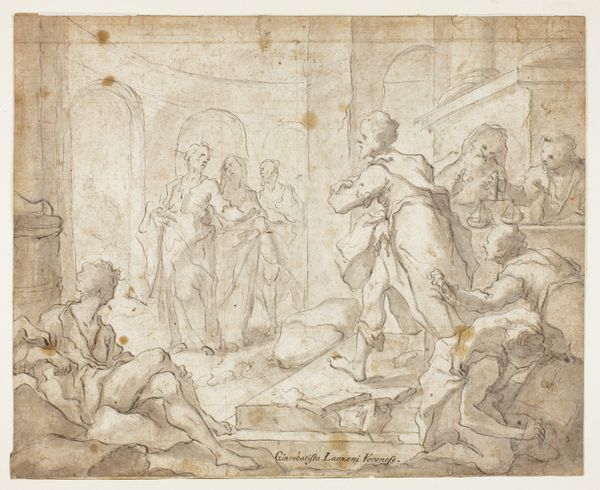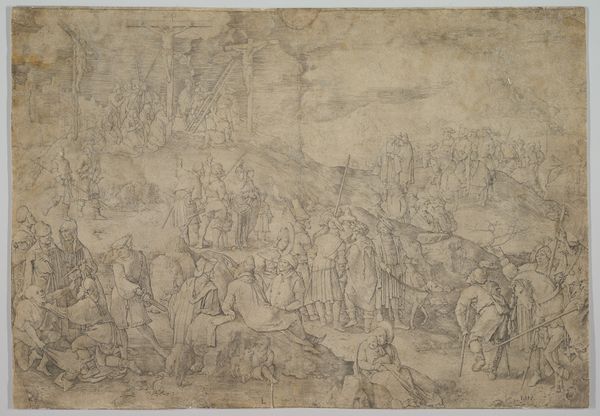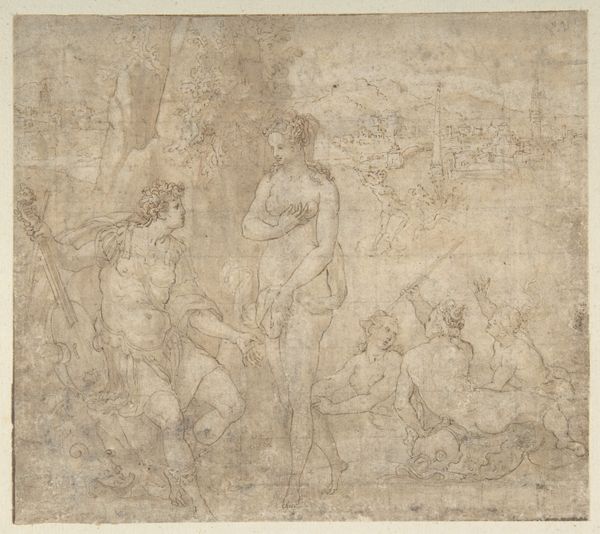
drawing, print, ink
#
drawing
#
narrative-art
#
baroque
# print
#
figuration
#
ink
#
men
#
history-painting
Dimensions: 17-3/16 x 23-3/8 in. (43.7 x 59.3 cm)
Copyright: Public Domain
Curator: My immediate impression? Chaos and cherubs, quite a combo. The scene feels both historical and operatic. Editor: Precisely! Here we have "The Massacre of the Innocents," rendered in ink, likely during the period from 1665 to 1747, attributed to the Baroque artistry of Giuseppe Maria Crespi. Curator: Ah, Crespi. Known for sneaking glimpses of the real world into his sacred scenes, wasn't he? Look at these mothers, grappling not just with abstract grief, but with the very real, messy physicality of loss. You can almost feel the weight of the bodies, the panic. Editor: Indeed. Crespi’s choice of red chalk amplifies the rawness, almost mimicking the staining of blood. Beyond the immediate horror, though, notice how the classical architectural setting looms over the massacre, a kind of judgment perhaps. Above it all, ironically, float scores of tiny angels. Curator: It’s such a strange juxtaposition, these puffy little putti watching the carnage. Are they witnesses, or are they part of the system, that blind divine will that allows such suffering? The angels feel decidedly decorative…even dismissive. Editor: It does echo, symbolically, that old conflict between the sacred and the profane. The innocent—represented in these very children who are about to die—are slaughtered to guarantee power on earth. This artwork carries the weight of generations. Curator: There's an uncomfortable beauty too, you know. The artist is able to transmute even profound anguish into something compelling and oddly gorgeous. And I find the composition itself beautiful. Look how the arch of the bridge frames the central violence, almost sanctifying the carnage in a brutal act of contrast. Editor: The arches also visually suggests the arc of time itself, from a brutal past echoing down through human memory into present experience. This scene reflects humanity itself: full of potential divinity as seen in its creative, artistic expression alongside great acts of violence. Crespi captured an essence here, using all the art's history to inform a fresh rendering of deep time and eternal symbolic drama. Curator: Absolutely. It’s a testament, isn't it, to the strange, almost unbearable, beauty that can emerge from the darkest chapters of our history. Crespi lets the light stream onto both tragedy and hope, mingled together, irrevocably.
Comments
No comments
Be the first to comment and join the conversation on the ultimate creative platform.
